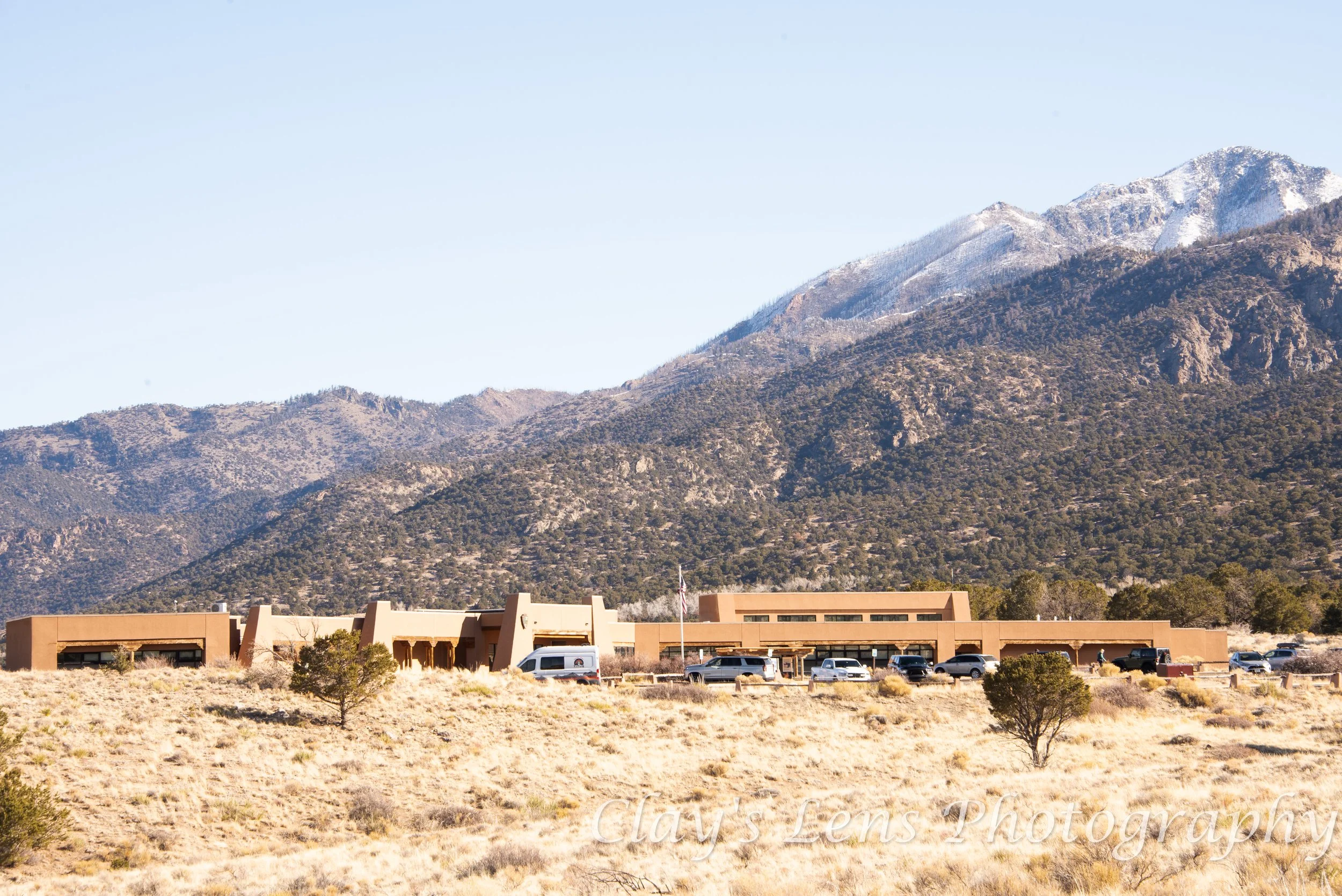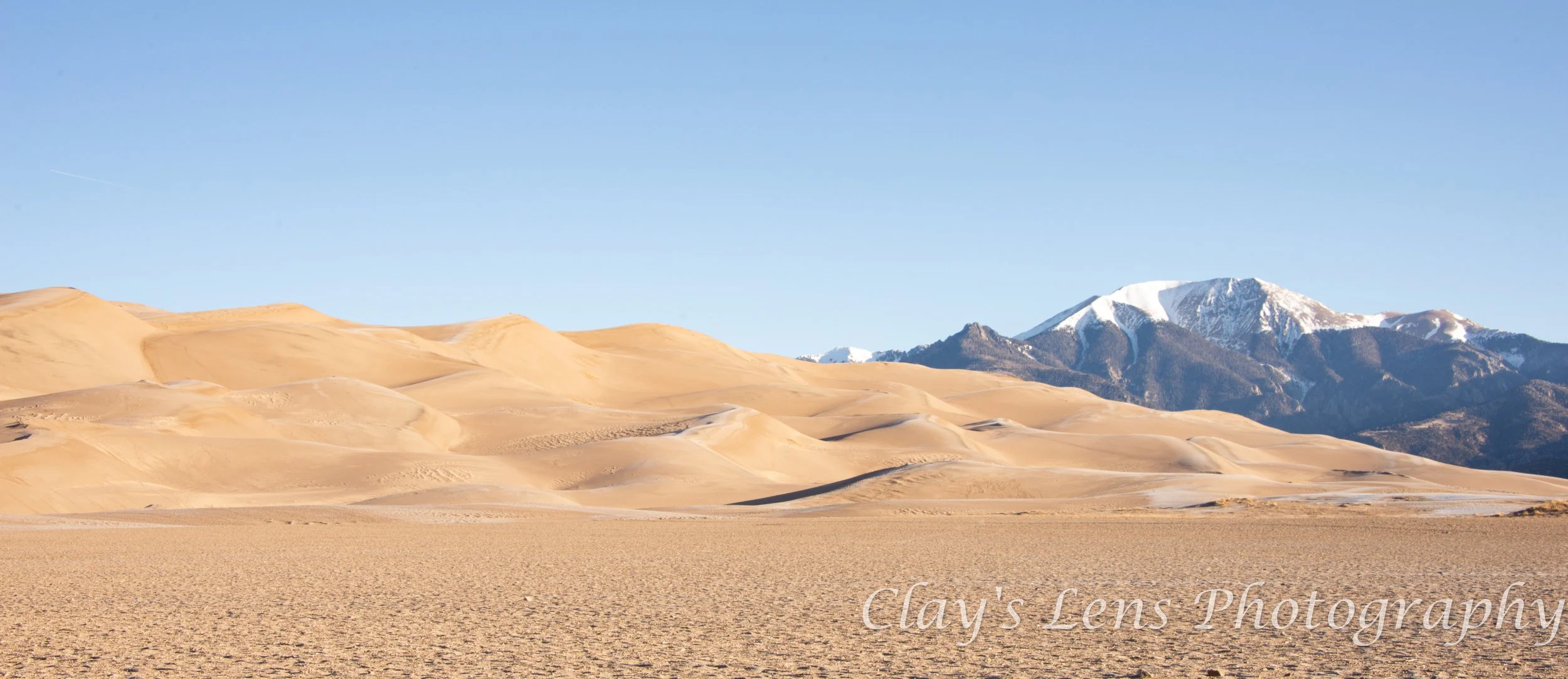A Late Winter Morning at Great Sand Dunes National Park
A sunrise hike in single-digit temps, elk on the plains, and towering dunes backed by the Sangre de Cristo Mountains—Great Sand Dunes National Park is unlike any other. My visit in early March was cold, remote, and unforgettable.
I visited Great Sand Dunes National Park in early March, arriving just before sunrise. The temperature barely climbed above the single digits, a stark contrast to the warm weather I had just left behind in San Diego. I hadn’t packed properly for the cold, but that discomfort quickly faded as I stepped out onto the sand and felt the crisp morning wind on my face. Despite the chill, the golden glow of the rising sun over the dunes was nothing short of spectacular.
As I hiked through the soft, sinking sand, my fatigue from waking up at dawn was overtaken by the sense of solitude and awe that this place inspires. The massive dunes roll endlessly, their golden ridges shifting with the wind, and behind them, the snowcapped Sangre de Cristo Mountains rise sharply—creating a stunning contrast of desert and alpine beauty.
In the distance, I could see herds of elk scattered across the valley, a reminder that life thrives even in this remote environment. Despite the rugged terrain and frigid conditions, the Great Sand Dunes Visitor Center was already buzzing with early morning explorers. It was the only visible sign of civilization in what otherwise felt like raw wilderness.
The park offers hiking and backcountry off-roading, though it’s strongly recommended to have a 4WD vehicle. Before venturing into the deep sand, drivers are advised to deflate their tires—lowering the air pressure increases the tire's surface area, improving traction and helping prevent your vehicle from getting stuck.
While this national park is quite secluded, its remoteness is part of what makes it so special. It’s over two hours from Pueblo and nearly four from Denver, yet the vast, untouched beauty makes every mile of the journey worthwhile. Just be sure to plan ahead for food, gas, and lodging, as nearby amenities are few and far between.
Tips for Visiting Great Sand Dunes National Park
Dress for the Season: Mornings can be brutally cold in early spring—even if you're coming from somewhere warm, pack layers, gloves, and a windproof jacket. Sunrise temperatures in March can dip into the single digits.
Plan for Isolation: There are few services nearby. Bring enough food, water, and fuel before arriving. The nearest town, Alamosa, is small—larger cities like Pueblo (2.5 hours away) and Denver (4 hours away) are much farther.
Visitor Center Resources: The Great Sand Dunes Visitor Center is open year-round and offers maps, trail info, a bookstore, and helpful ranger guidance. It’s also a good spot to warm up if you're there on a chilly morning.
Hiking Tips: The dunes are tougher than they look—walking in soft sand is slow and tiring. Start early to avoid heat and wind in warmer seasons.
Driving Off-Road: If you plan to explore the park’s backcountry, 4WD is required. Be sure to air down your tires before heading into deep sand—lower pressure increases traction and helps prevent getting stuck.
Watch for Wildlife: Keep your eyes on the plains during early morning and dusk. Elk herds often roam the valley and can be seen from scenic pullouts or hiking trails.








